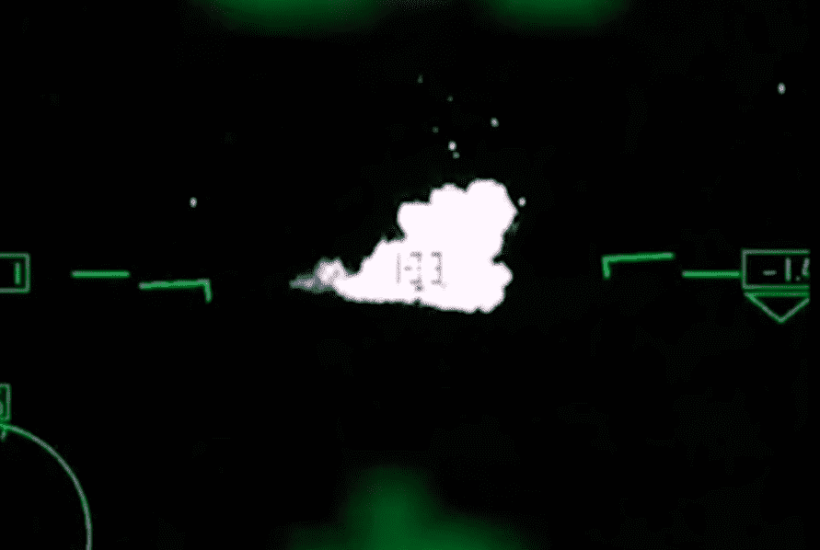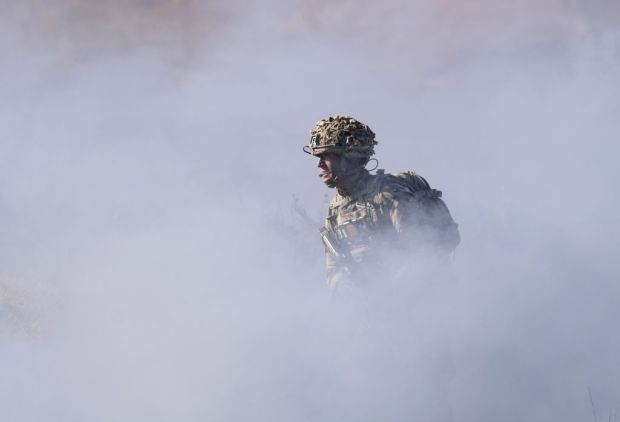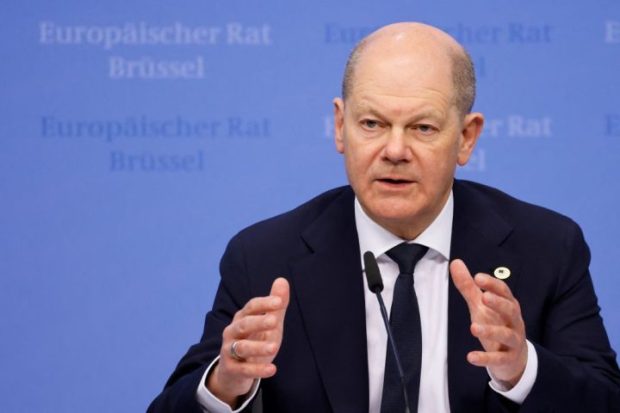Russian forces have reportedly been ordered to watch last year’s state-funded propaganda film Sky. The Kremlin-funded drama follows the lives of Russian airmen in Syria, where an estimated 18,000 people are believed to have died in Moscow’s bombings. With jets soaring through the sky and explosive special effects, it tells the story of Oleg Peshkov, a pilot shot down by a Turkish fighter plane.
When Hollywood makes its own action flicks about the war in Ukraine, directors may settle for a different kind of hero. Instead of strapping military men jumping into cockpits, it is becoming increasingly clear that Kyiv owes much of the credit for its fierce defence to drones. While in the past, this would have made for a less than thrilling spectacle – operators sat safely sipping coffee and staring at monitors – it’s a tale that may prove nearly as gripping.
Just one week into the war, as a 40-mile column of Russian troops, tanks and artillery closed in on the capital, Ukrainian special forces set out on a daring mission to stop the invaders in their tracks. A handful of drone pilots on quad bikes were sent in to get close, send up miniature drones capable of dropping 1.5kg bombs, and race off before the enemy could track their electronic signatures. While they took out only two or three vehicles at the front of the convoy, they blocked the road and left the rest as easy targets. The resulting carnage, the smashed vehicles and shattered bodies, was beamed around the world as evidence the eastern European nation wasn’t going to give in easily.
This unlikely operation was just part of a radical shift in how wars are being fought, both in terms of technology and tactics. Over the past few years, unmanned aerial vehicles have come on rapidly, to the point where a country like Ukraine can wreak devastation from the air despite a lack of conventional warplanes.

Earlier this week, Washington confirmed that it would supply Ukraine with a hundred deadly ‘switchblades’, one of the most advanced weapons available. Weighing only 2.5kg, it can be carried by a soldier in a backpack and controlled from a smart tablet. Once in the air, the switchblade goes into a holding pattern for around 15 minutes, flying at 60 miles an hour and waiting for a hostiles to be identified. Once a target is selected, it virtually doubles its speed and ploughs downwards into the vehicle, encampment or group of troops, detonating on impact. Under the terms of the deal, Kyiv will receive 100, costing around £6 million each.
Another model that has Russian forces watching the skies is the Turkish-made Bayraktar TB2, which can fly at altitudes of up to 25,000 ft for up to 30 hours. Despite its 12-meter wingspan, it keeps a low profile, helping it avoid radar detection and, crucially, can cost as little as £750,000 each, meaning operators aren’t as fearful about undertaking risky missions. This is just as well, given two appear to have been shot down by Russian anti-air defences in recent weeks. They have, however, become a fearsome part of Ukraine’s arsenal, laying waste to armour with their four laser-guided missiles.

The country isn’t just on the receiving end of the drone industry. Under the terms of a partnership deal with Ankara, the engine for the advanced new Akinci drone – made by the same firm as the TB2 – is being manufactured in Ukraine. Capable of carrying around 1,300 kg of payload, equivalent to as many as eight bombs, its giant fuselage resembles a warplane more than previous models.
Selçuk Bayraktar, the son in law of Turkish President Recep Tayyip Erdogan and the chief engineer behind the project, has said initial tests have proven successful. He has promised that it will be ‘the most powerful and combat-capable armed UAV in its class in the world’ because of its potential to carry powerful missiles and its stealth capabilities. Turkey is also known to have invested significant time and resources in developing ‘drone swarms’, in which large numbers group together to overwhelm a target.
 Designs for the anti-drone drone (RianRU/Telegram)
Designs for the anti-drone drone (RianRU/Telegram)
However, Russia too is preparing to hit back. In January, Moscow’s military patented a new ‘anti-drone drone’ that sprays out a field of tiny metal fragments designed to take out incoming swarms, protecting slow-moving tanks and stationary targets. The as-yet-unnamed innovation is yet to see the light of day but exemplifies the ongoing arms race.
If the trend carries on and the face of conflict continues to change, the blockbusters of the future may end up looking less like Saving Private Ryan and more like Robot Wars.
Got something to add? Join the discussion and comment below.
Get 10 issues for just $10
Subscribe to The Spectator Australia today for the next 10 magazine issues, plus full online access, for just $10.



















Comments
Don't miss out
Join the conversation with other Spectator Australia readers. Subscribe to leave a comment.
SUBSCRIBEAlready a subscriber? Log in